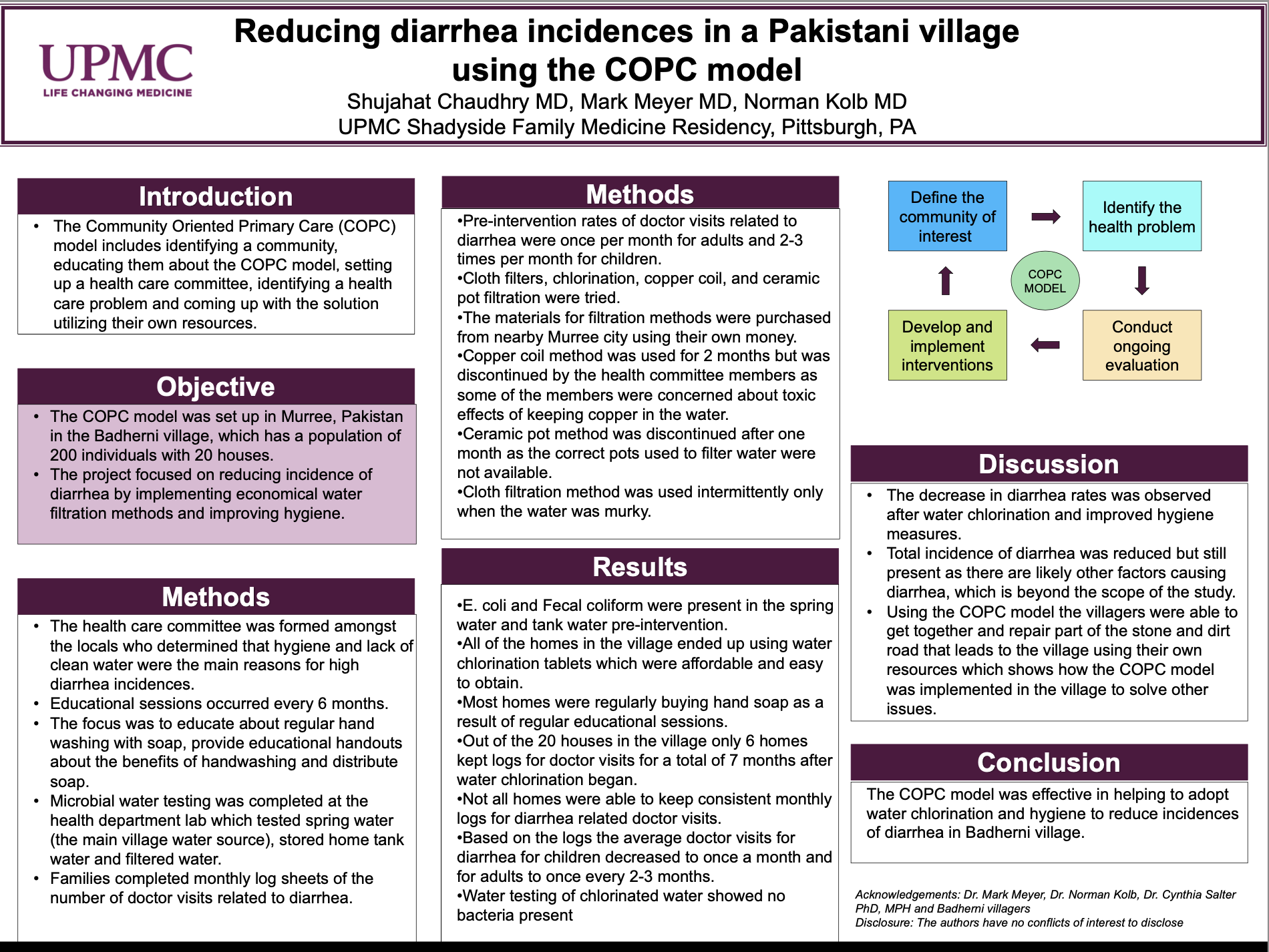Reducing Diarrhea Incidences in a Pakistani Village Using the COPC Model
Authors: Shujahat Chaudhry, MD; Mark Meyer, MD; N. Randall Kolb, MD
Introduction:
The Community Oriented Primary Care (COPC) model includes identifying a community, educating them about the model, setting up a health committee, identifying health problems and developing solutions utilizing local resources. This project used the COPC model in Murree, Pakistan in Badherni village which has a population of 200. The health committee of 12 local men and women identified hygiene and lack of clean water as primary reasons for high diarrhea incidence. This project focused on improving hygiene and implementing economical water filtration methods.
Methods:
Educational sessions on handwashing were provided to school children and to adults every six months. Educational handouts in Urdu language and soap were distributed at the sessions. Microbial water testing of spring water (main village water source), stored home tank water and filtered water, was completed before and after the intervention.
Cloth filters, chlorination, copper coil, and ceramic pot filtration were pilot tested in three-four homes among health committee members. Only water chlorination was implemented for the entire village. Families completed monthly log sheets on doctor visits for diarrhea. Pre-intervention rates of doctor visits for diarrhea were once per month for adults and two-three times per month for children.
Results:
Spring water and tank water contained E. coli and Fecal coliform. All homes ended up using water chlorination tablets which were easily available at an economical price. Committee members reported most homes were regularly buying hand soap. Six of 20 homes kept doctor visit logs for seven months after water chlorination began, and none kept consistent monthly logs for every single month. Available logs showed average doctor visits for diarrhea for children decreased to once a month and for adults to once every two to three months.
Conclusion:
The COPC model was effective in helping to adopt water chlorination and hygiene to decrease diarrhea rates.

